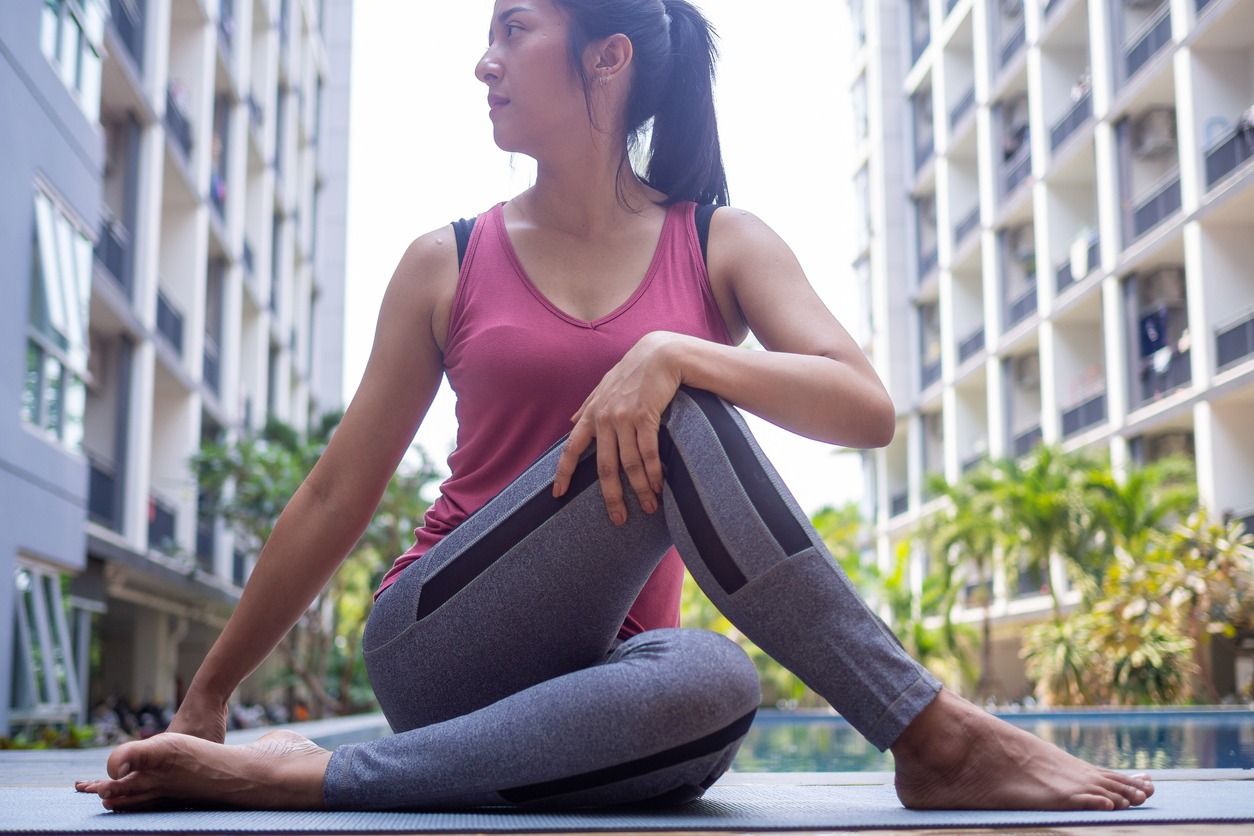Golf is often thought of as a laid-back sport that doesn’t demand a lot of physical effort. However, this perception doesn’t quite match up with reality. In fact, golf involves a range of physical activities that are good for your body.
Similar to numerous sports, golf requires a significant level of physical engagement. Walking from hole to hole and swinging the club get your heart rate up, which is great for your cardiovascular health. The act of swinging the golf club, especially if you do it with power and precision, engages various muscles in your arms, shoulders, and even your core. This can be considered a form of strength training, as it gradually strengthens these muscles over time.
Just as you prepare for a race or sport, getting your body golf-ready is essential for a successful and enjoyable experience on the course. But how exactly does it help? Let’s delve into the advantages of maintaining your physical fitness. By understanding these benefits, you can embrace a new exercise routine and develop the stamina not only to conquer a full day of golf but also to excel beyond the course.
What is Golf Fitness?
Golf Fitness involves using exercise to make positive changes in your body, boosting your performance and scoring abilities in golf. It is all about being in great shape to play your best game as well as reaching your own personal peak performance on the golf course. The goal is to enjoy as many rounds of golf as you want, without getting hurt. It’s like making sure your body is ready for all those swings and putts.
Golf Fitness also helps you find any areas where you might not be as strong or flexible, which could affect how well you play. You learn how your body’s limits affect your golf swing, and most importantly, you discover ways to improve those limits through exercises, getting stronger, and even doing physical therapy if needed. It’s like fine-tuning your body so you can have a blast on the golf course and play your best game ever!
Whether you’re a dedicated professional or simply enjoying a casual game, enhancing your physical readiness for golf ensures your body moves in the right ways for better swings and less risk of injury.
Benefits of Golf Fitness Training
1. Prevent Injuries
Imagine golf fitness as your personal shield against injuries. Swinging a golf club might bring along issues like aching back, sore muscles, and joint troubles. But here’s the catch – doing exercises tailored for golf can be a game-changer. Before hitting the course, warm-ups get your body ready and decrease the chances of getting hurt. And here’s a handy tip: when you work on exercises that balance your muscles, you’re actually easing the strain on your joints. This is important because too much stress on your joints can lead to problems like arthritis and pain. When your muscles are stronger, you’ll navigate the twists and turns of golf confidently.
Have you ever faced shoulder or rotator cuff problems? They can really bother you, often cropping up when your swing isn’t quite right or when you’re relying too much on your shoulders. But guess what? If you learn how to move your shoulders better, you can ease the pressure and enjoy a more comfortable play.
Now, another crucial part are hips – they’re a big deal too. During your swing, your hips play a crucial role in shifting power around. But if your hips aren’t up for the task, you might end up feeling discomfort. By boosting your hip strength and flexibility, you’re giving them a big thumbs-up. This keeps your hips content and in good condition.
So, here’s the scoop: golf fitness is like your dependable companion for an improved game and a healthier version of you. It’s not about doing anything wild; it’s about incorporating simple exercises that seriously enhance your golfing experience. With just a small amount of time each week, you’ll hit more accurate shots, take command of your game, beat tiredness, and most importantly, keep those pesky injuries away. Think of it as having a fitness buddy who amps up the fun and safety of your golfing adventure.
2. Boost Your Swing Potential
When you swing, your body should be like a team, with your shoulders, back, hips, and hands all playing together. A golf fitness program helps them work well together.
Now, another crucial aspect is power. It’s like making your swing faster and stronger. It’s not just your arms; it’s your whole body working like a machine. To do this, your muscles need to be strong and stretchy, especially in your shoulders. That’s where fitness comes in, like training for a race that makes your body flexible and fit.
So, if you thought fitness was only for really strong people, think again. It’s like giving your golf swing a super boost. It’s not just lifting heavy things; it’s about learning the right moves. Your body becomes the magic wand, and the golf course is where you show your trick. With fitness, every swing is like a special spell.
3. Improve Control for Each Swing
In the world of golf, two key desires reign supreme: the perfect hole-in-one and the ability to control each swing with finesse. Your body, like the steering wheel, needs to respond with precision. This aspect often gets overlooked, but it’s a game-changer.
As you engage in these exercises, your core becomes the conductor, guiding your body’s movements. You grip the club firmly, but not like you’re hanging on for dear life. It’s a relaxed but focused grasp, much like a pianist’s gentle touch on the keys. This controlled strength radiates through your body, making your swing effortless, efficient, and injury-free.
Consider the wisdom of Kai Fusser, a master of the craft. He unveils the secret of controlled movements – a technique where you don’t squeeze too hard, and your muscles harmonize throughout your body. It’s like a dance, smooth and fluid, channeling energy exactly where it’s needed. Imagine translating this newfound finesse onto the course – hitting the ball with precision and distance, all while feeling like you’re putting in a comfortable 80-90% effort.
So, remember, it’s not just about hitting hard; it’s about hitting smart. A golf fitness program isn’t just a routine; it’s your backstage pass to mastering control, unlocking the true potential of each swing.
4. Lower Tiredness on the Course
Golfing, a peaceful game on pretty greens, has a hidden challenge – it can make your body tired. Imagine walking 3 to 6 miles during an 18-hole game, going up and down hills, different grounds, and looking for lost balls. If you’re not very fit, this can tire you out quickly. But don’t worry, there’s a solution: staying physically fit.
Think about this – keeping your body strong not only helps you finish those 18 holes, but it also prepares you for more games, no matter where you play. And guess what? Chiropractic care can help you recover from tiredness.
Now, let’s talk about playing golf as you get older – there are two things that can make it hard: your muscles getting weaker, called sarcopenia, and your bones getting fragile, known as osteoporosis. Both can affect your enjoyment of golf in your later years, like your 60s, 70s, and 80s. But here’s some good news – here comes strength training, like a hero in a story. Studies show that strength training can fight against these problems. It helps you keep your muscles strong, boosts your strength, and makes sure your bones stay tough.
Golfers Tailored Exercise
Whether you’re a seasoned player or just starting out, these exercises can help you build strength, balance, and flexibility, giving you an edge on the course.
1. Seated Rotations
Target: Rotational mobility for a smoother swing.
How: Sit on a bench or pad, club behind your back, palms on your stomach. Rotate your torso right and left without moving your hips. 10 reps each side.
2. Standing Ys
Target: Shoulder mobility and posture improvement.
How: Stand bent over, holding a golf club with palms up. Raise arms to form a Y, engaging shoulder blades. Return to start. 10 reps.
3. Handwalks
Target: Prevent golfer’s elbow and shoulder injuries.
How: Start standing, hands on the ground, walk hands out to pushup position. Walk toes toward hands, feeling a stretch. Repeat 10 times.
4. 90/90 Stretch
Target: Open shoulders, enhance flexibility.
How: Lie on side, bottom leg straight, top leg bent. Rotate trunk back, top shoulder blade on the ground. Repeat 10 reps each side.
5. Lateral Pillar Bridge
Target: Hip opening, back pain prevention.
How: Lie on side, elbow under shoulder, push hip off ground to create a straight line. Hold for 3 seconds. 10 reps each side.
Conclusion
Keep in mind that staying consistent is crucial. Begin at a pace that suits you and progressively raise the repetitions and duration as you gain strength. Adequate hydration, balanced nutrition, and tuning into your body’s signals are vital. Your dedication will pay off, and you’ll witness remarkable enhancements in your strength, balance, and flexibility sooner than you think.



